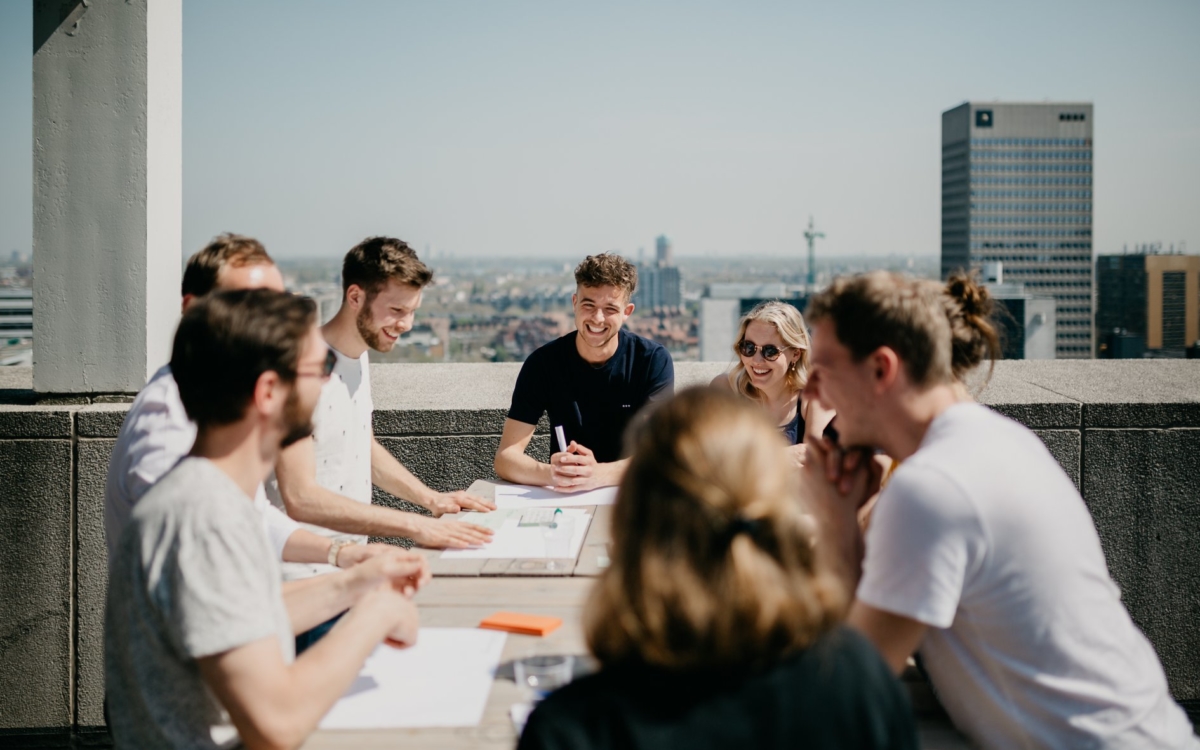Workshops are essential at the start of any new client project or relationship. We use them to help us understand your requirements, by getting to know your business and its objectives in a collaborative environment that provokes thought and discussion.
To maximise the benefits of running workshops, they must be considered and well planned; there is no point in running a workshop ‘just for the sake of it’. They can be hard work (but they can also be a lot of fun!)
Workshop types
The three main types of workshops we run regularly are:
- Stakeholder Workshops
- User Workshops
- Content Workshops
Each workshop has a defined objective and purpose, which adds to the overall vision and digital strategy.
Stakeholder workshops
A Stakeholder Workshop can be one of the hardest to arrange, as there are many hurdles to overcome, such as: finding a time to suit everyone’s calendar; defining which are the right staff to attend; the length of time available/required; and finding a mutually convenient venue.
We keep the structure of our workshops flexible, and each one is tailored to suit the client and project’s needs and requirements. Some of the key, high-level topics a Stakeholder Workshop covers include:
- What are the core business activities?
- What are the key business objectives?
- What are the challenges they face?
- Internal understanding and engagement with technology.
- How the current digital environment is managed.
- What they think about the current digital environment.
- What they want from the digital environment.
- What they think users want from the business digitally.
To help us gather all this information, we play games that have been designed and perfected over many years, to extract and prioritise the information we need, in a fun and enjoyable way.
1. Hot air balloon
This is a really simple game that I have used across many companies and continents, to identify what users do and don’t like about their current solution, services or product.
I tend to use this when I have lots of workshops to run over a short space of time, with stakeholders from multiple job functions involved.
The Game
Draw a hot air balloon in the middle of a flipchart page. This is a symbol for your solution, service or product.
Working in groups of four to seven people, ask the stakeholders to identify the following:
- Anchors – these are the things that are currently holding them back, elements they don’t like, or issues that they face.
- Wind – these are the things that they do like, and the reasons they use that particular solution, product or service.
Ask the stakeholders to add their thoughts to the flipchart on post-it notes, discussing each one as they add them. This initiates a discussion – it’s the commentary around the issues and the consensus across the group that provides the real insight in to the issues and benefits.
Once everyone has added their notes to the page, I find it helps if you then work with the group to categorise and prioritise the information by simply arranging the post-it notes in to groups, or ordering them in terms of priority.
2. Product box
A slightly more complex game that requires the group to be more engaged.
The Game
- Split the group in to teams of three to four people. Provide each group with a plain box and some coloured pens.
- Ask the teams to design a product box for the solution, service or product. As opposed to focusing on the features, teams should identify the problems that they want to solve, and present how the solution will help overcome them.
- Each group is then asked to present their Product Box back to the group.
The interaction here can be invaluable for defining the consensus of problems/solution needed, and can promote insightful discussion. Be prepared to take notes or video the discussion (if delegates are in agreement).
3. SWOT analysis
This is a good exercise for larger groups. If used correctly, it will help you to define the requirements needed to achieve a vision or key business objective. It is important that this outcome is clearly defined at the beginning.
SWOT exercises can require a lot of leading, as many groups find it hard initiate discussion or identify weaknesses. This is where the use of icons and analogies can help to generate the ideas (e.g. strengths = strong arm symbol).
- Use four separate flipchart pages on a large wall, and label them with Strengths, Weaknesses, Opportunities, Threats.
- Ask the group to work on each section in order, starting with strengths. Get them to generate five ideas individually, write them on post-it notes, and add them to the wall, describing them to the group as they do so.
Once you have covered the four sections, I would recommend that you then work with the group to organise and prioritise the ideas. This will highlight the areas within each of the four sections that have the most consensus, and provides the activity themes for going forward.
Who should attend a stakeholder workshop?
The attending delegates should represent all areas of the business, including:
- Senior and Middle Management
- Administration and Accounts
- Customer Service
- Employees at the customer frontline
If this is a global organisation, it may be best to complete similar workshops in each of the key locations.
Attitude
Creating the right environment and attitude for the workshop is really important. We work hard at this by using simple, creative introductions to make people feel more comfortable. If a group is large, creating smaller teams of four to six people can help increase each user’s involvement higher.
Creating a workshop that is open and honest can be tricky, as you need to ensure that the quieter delegates don’t get drowned out by any overpowering individuals, or even conflicting areas of a business. In these scenarios, it may be necessary to mix and move people around the teams to ensure a fair representation.
Location
A workshop can be run in any room but, when possible, I like to avoid boardrooms, as it can be a fairly intimidating, formal environment. Sometimes it can help if the workshop is held outside of the business.
Practical considerations include remembering to check that your post-it notes, tape or blue tack don’t mark the walls, as the next budget sign-off might be difficult if they need to re-decorate the room after the workshop!
The room should have space for everyone to get up move around. If you run group exercises, teams will need space to huddle, discuss and collaborate. Try to view the room before the workshop to ensure its suitability.
At DEPT®, we have a number of rooms set-up for workshops, with dry-wipe walls and surfaces which are great for idea-storming.
Equipment
The basic equipment you need for a workshop is very simple!

User workshops
Although User Workshops can include the same over-arching game objectives as the Stakeholder Workshops, there are a few differences to consider:
- Location – neutral is best. Is it even necessary to disclose the company, brand, product or service being discussed?
- Preparation – I find that workshop outcomes are optimised if time is taken in the selection and profiling of users beforehand, to ensure you have the right representation present.
- Profiling – ensure that you either use diverse groups, or run separate sessions of grouped profiles, otherwise it may be hard to prioritise and analyse findings.
- Pre and post session questionnaires – these are a good way to benchmark the profiles before and after the workshop. Pre-questionnaires can help prepare the candidates for the type of activities and questions they will be asked to participate in. Post-questionnaires can help you to understand if perceptions have changed.
Factors to consider
About the user
- Who are they? (Age/gender/profession etc.)
- What do they need / want?
- How do they currently use technology?
- What challenges do they face?
The user and their internet usage
- What is their understanding and engagement with technology?
- How do they use the internet?
- What do they think about the current digital offerings?
- What do they expect and want in future?
Content workshops
These are normally delivered during the project to:
- Review and challenge current content styles.
- Clarify what needs to be done to existing content to improve it for the new environment.
- Educate and train internal teams on content best practice.
- Support the development of a ‘content bible’ for consistent content development.
- Prepare or understand the workflows around content approval.
- Define and understand the different types of content – copy, picture, animations, illustrations and videos.
- Support the creation of a content map for the migration to the new environment.
What are the benefits
A well-run workshop, or series of workshops, will provide a plethora of benefits. Not only do they strengthen the agency and client’s knowledge and relationship, but can also provide many benefits internally within an organisation.
Agency benefits
Form an external perspective, it’s important that our teams are aligned and quickly working towards your goals and business objectives. Workshops are key to the initial relationship development, and create a platform for communication that results in immediate project benefits.
Workshops help an agency:
- Understand the core business objectives.
- Understand your customers’ needs.
- Propose and deliver the right features, resulting in cost and time savings.
- Make better strategic proposals.
- Identify different touchpoints where digital can aid the customer.
- Provide insight into your customers’ experience.
- Highlight where improvements can be made to support sales and services.
- Identify project priorities for functionality.
- Identify the most effective marketing messages and sellable features.
- Support the development of a project road-map.
Client benefits
Workshops are not just about the project briefing and agency relationship. We have run many workshops across a wide variety of projects and client relationships, and the benefits within the clients’ internal environment can be huge.
Many of the projects we deliver are transformational for the business; workshops can provide the following internal business benefits:
- The team and cross-functional departments feel that they have been involved in creating their own futures, providing on-going buy-in to both the project and business objectives.
- Increases empathy for your customers’ experience.
- Ensures that everyone is ‘on the same page’.
- Helps teams make better strategic decisions, with stakeholder support.
- Defines and supports synergies in department strategies.
- Aids cross-functional team development, understanding and learning.
- Reduces conflicts and silos.
- Generates enthusiasm and positive energy towards the project.
- Creates ownership and commitment from the internal teams.
Workshops can work wonders
We’ve run countless successful workshops, and find them paramount to project scoping and solution building. Stakeholder engagement, user input and effective content planning are invaluable when embarking on a project. Workshops deserve thought, time and careful planning. Do that, and the benefits will speak for themselves.
More Insights?
View all InsightsQuestions?
Global SVP Technology & Engineering





